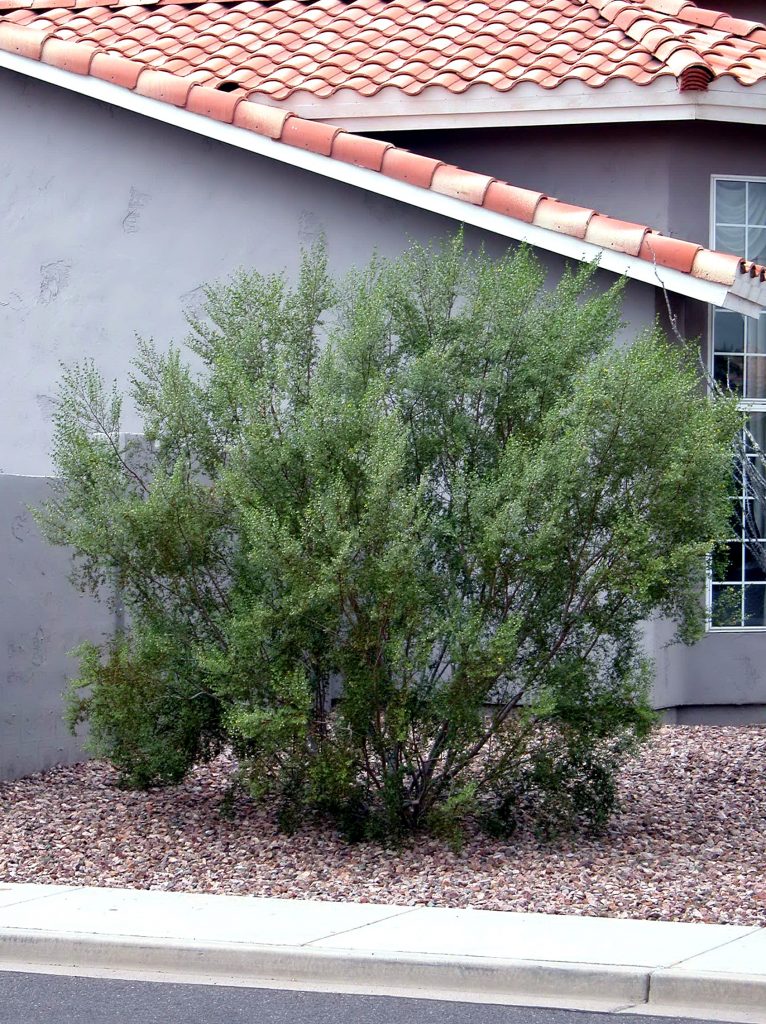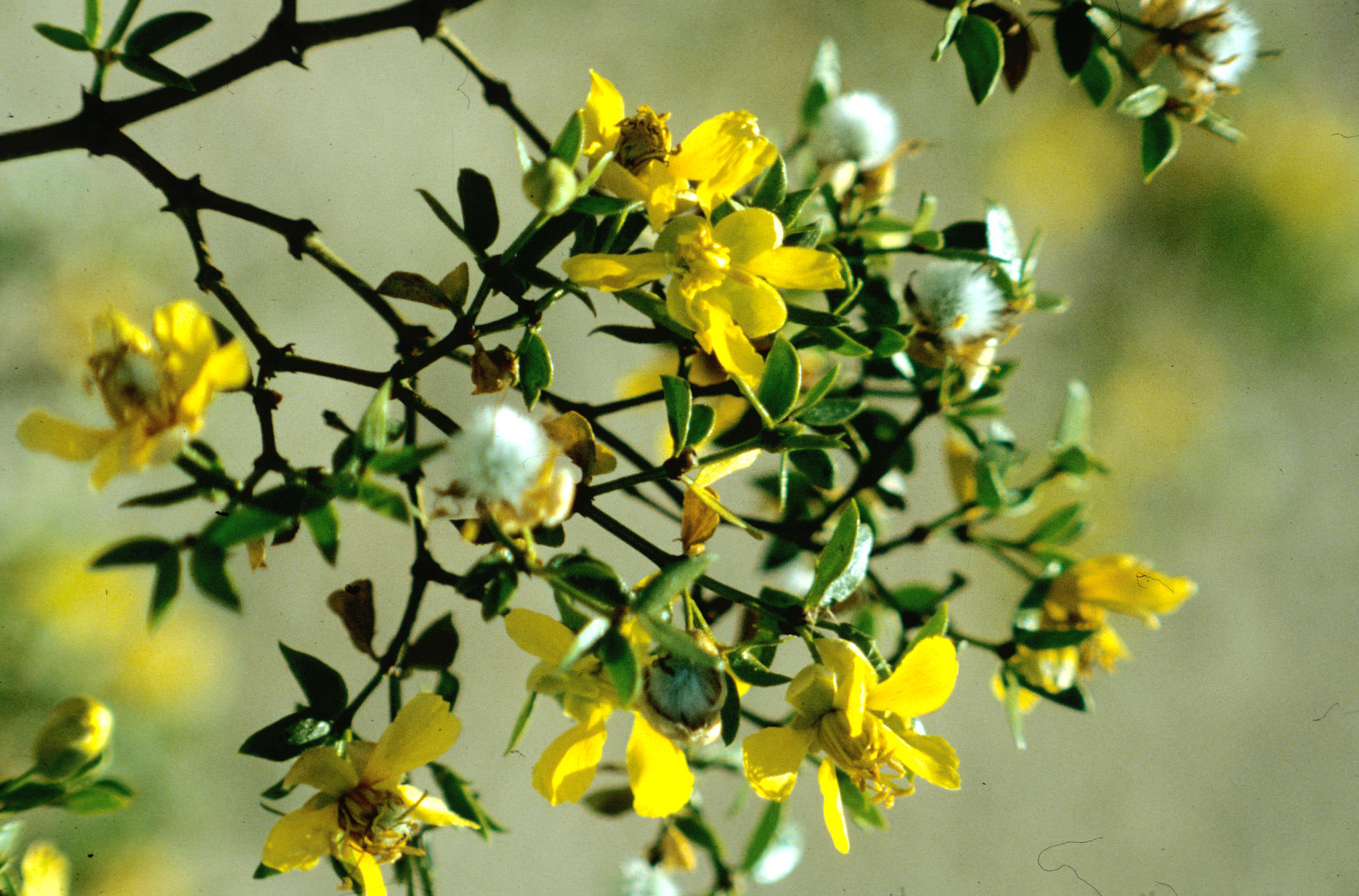Creosote Bush, Larrea tridentata is the perfect plant for us to feature during these hot summer months. It’s one of the toughest plants you’ll find, and with a little extra water, they are green and attractive in the landscape!
Description – What does the Creosote Bush look like?
Whenever it rains in the desert, Creosote Bush lends a distinctive fragrance to the air. Tiny resinous olive green leaves are the source of real creosote, as the common name would suggest. Twisted gray stems rising from a central base are sparsely foliated, giving the plant an open, airy appearance. Under favorable soil and moisture conditions, Creosote Bush can reach 10 feet in height and width. A more typical size is 6 feet high and 8 feet wide. Throughout the year, but heaviest in spring, ½-inch yellow flowers sprinkle the foliage. Pea-sized fruits with a dense covering of silver hairs follow the flowers.
Native Distribution – Where do I find the Creosote Bush?
One of the most common shrubs of the southwestern deserts, Creosote Bush occurs from western Texas to southeastern California, north to southern Utah and Nevada, and south to Baja California, Queretaro, and Hidalgo, Mexico. It usually grows in loose, well-drained soil on dry plains, mesas, and slopes, between sea level and elevations of 5,000 feet.


Culture – What can I expect if I plant a Creosote Bush?
Creosote Bush is extremely drought tolerant once established. It is also very cold hardy, to 5 degrees Fahrenheit. Full sun is preferred; plants in shade become leggy and sparse. Typically, Creosote Bush grows at a slow to moderate rate. Additional water and fertilizer can speed things along, though the resulting growth lacks the distinctive gnarled, irregular appearance. Pruning is recommended only to remove dead wood. A tiny fly called a midge causes galls. These 1-inch balls of distorted foliar growth form on Creosote Bush’s branches. The galls usually occur on water-stressed plants, but they don’t seem to cause serious harm.
Landscape Use – How is the Creosote Bush best used in the landscape?
Creosote Bush works well in revegetated or naturalistic desert landscapes. Plants can be massed for screening. They can also be used singly to showcase their distinctive form. A plain background is particularly effective to accent the irregular, twisted branches. The delicate foliage of Creosote Bush is a good contrast to the bold forms of cacti and other succulents such as Agave species.
Did you know that up to 70 percent of water use is outdoors? That’s why we love desert plants and feature them each month. It’s still a great time to plant non-tropical plants in your landscape, and you can learn more about these and other plants on our Arizona Low-Water-Use Plants page. Visit our page on Planting Trees and Shrubs for tips on plant selection and how to plant properly.
Also, be sure to read through all of our featured Plant of the Month blogs!
From time to time, Water – Use It Wisely features guest bloggers who write about topics related to water and water conservation. Judy Mielke is a horticulturist, Landscape Architect and the author of one of Water – Use It Wisely’s favorite books. You can find plant descriptions like this and many more in her book Native Plants for Southwestern Landscapes.

